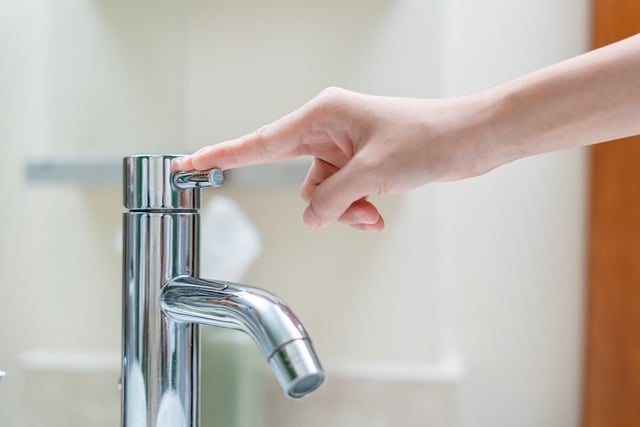Incorporating greywater systems, water-saving fixtures like low-flow showerheads, and energy-efficient components such as LED lighting and water heaters into a bathroom remodel offers a comprehensive approach to sustainability and energy conservation. This strategy not only reduces water usage by up to 80% but also minimizes electricity consumption, lowering utility bills and environmental impact. By combining these eco-friendly elements, homeowners can achieve an energy-efficient bathroom design that aligns with conscious living trends while minimizing their carbon footprint.
Incorporating water-saving greywater systems offers a sustainable solution for your bathroom remodel, transforming it into an energy-efficient and eco-friendly space. This article explores the benefits of reusable water through greywater systems, ideal for irrigation or as part of a comprehensive bathroom renovation. From low-flow showerheads to LED lighting and energy-efficient water heaters, discover how to reduce water consumption without compromising on style. We provide a step-by-step guide to installing a greywater system and offer design choices to create a water-conscious bathroom that’s both functional and sustainable.
Understanding Greywater Systems: Reutilizing Water for a Sustainable Bathroom Remodel
Incorporating greywater systems into a bathroom remodel offers a sustainable and innovative approach to water conservation. These systems capture and treat wastewater from sources like showers, sinks, and laundry machines for reuse in irrigation or non-potable applications. A bathroom remodel focused on energy efficiency can further enhance its environmental benefits by integrating low-flow showerheads, water-efficient toilets, and eco-friendly fixtures alongside greywater technology. This holistic approach ensures a more sustainable home while potentially reducing water bills.
When designing an eco-friendly bathroom renovation, LED bathroom lighting is another key component that contributes to energy savings without compromising on ambiance or functionality. Additionally, considering energy-efficient water heaters as part of the remodel can significantly decrease the overall energy consumption of your home. By combining these strategies, a sustainable bathroom remodel becomes not only an environmentally responsible choice but also a practical and cost-effective one.
Benefits of Low-Flow Showerheads and Their Impact on Water Conservation
Low-flow showerheads are a simple yet highly effective way to incorporate water conservation into your bathroom remodel for energy efficiency. These fixtures reduce water usage without compromising on performance, making them a key component in any eco-friendly bathroom renovation. By installing low-flow showerheads, you can significantly cut down on water waste, which is especially beneficial if you’re aiming for a sustainable bathroom remodel. They work by aerating the water stream, providing a satisfying shower experience while using less water than traditional models.
In terms of energy efficiency, LED bathroom lighting and energy-efficient water heaters further enhance the sustainability of your space. These technologies not only reduce electricity consumption but also contribute to a smaller carbon footprint. When combined with low-flow showerheads, these water-saving bathroom fixtures create a holistic approach to conservation, ensuring that your bathroom remains both stylish and environmentally friendly.
Energy-Efficient Bathroom Fixtures: LED Lighting and Water Heaters
A bathroom remodel focused on energy efficiency and sustainability can significantly reduce an individual’s environmental footprint. One effective strategy involves incorporating water-saving bathroom fixtures, such as low-flow showerheads and faucets. These not only decrease water consumption but also often work in tandem with pressure regulation technology, ensuring a consistent, high-quality experience.
Additionally, updating to LED bathroom lighting and energy-efficient water heaters further enhances the eco-friendly aspect of the renovation. LED lights consume far less electricity than traditional bulbs, significantly reducing energy usage without compromising brightness. Similarly, modern energy-efficient water heaters are designed to optimize heating performance while minimizing power draw, contributing to a more sustainable home and lower utility bills.
Incorporating Eco-Friendly Design Choices for a Water-Saving Renovations
When planning a bathroom remodel for energy efficiency and sustainability, incorporating eco-friendly design choices can significantly reduce your water and energy consumption. One of the most effective ways to achieve this is by installing water-saving bathroom fixtures, such as low-flow showerheads and faucets. These innovations not only conserve water but also lower heating costs, making them a smart investment for any homeowner aiming for a sustainable bathroom remodel.
Additionally, opt for energy-efficient alternatives like LED bathroom lighting and energy-efficient water heaters. These technologies consume less electricity, further enhancing the eco-friendly profile of your renovation. An energy-efficient bathroom design not only reduces utility bills but also contributes to a greener lifestyle, ensuring that your home becomes a model of sustainable living in today’s world.
Step-by-Step Guide to Installing a Greywater System for Your Home
Step-by-Step Guide to Installing a Greywater System for Your Home
Starting your journey towards a sustainable bathroom remodel? Incorporating a greywater system is an excellent way to reduce water consumption and contribute to energy efficiency. This eco-friendly approach involves collecting, treating, and reusing water from sources like sinks, showers, and laundry machines. Typically, the process begins with setting up a collection system within your plumbing network. During your bathroom remodel for energy efficiency, ensure that new water-saving fixtures, such as low-flow showerheads and efficient toilets, are seamlessly integrated into this system.
Next, install a treatment unit to filter and purify the greywater. Many systems use natural filtration methods, employing microorganisms and plants to break down contaminants. Once treated, the water is ready for reuse, primarily for non-potable applications like irrigation, flushing toilets, or even cleaning. To maximize sustainability, pair your greywater system with energy-efficient appliances, including LED bathroom lighting and high-performance water heaters. These measures will not only reduce water usage but also minimize your carbon footprint.
Incorporating water-saving greywater systems, along with eco-friendly design choices and energy-efficient fixtures like low-flow showerheads, LED lighting, and energy-efficient water heaters, can significantly enhance the sustainability of a bathroom remodel. By reusing greywater for irrigation or other non-potable purposes, homeowners can reduce their water footprint and contribute to a greener future. A well-planned, water-conscious bathroom renovation not only conserves resources but also becomes a testament to sustainable living, ensuring a brighter, more resilient tomorrow.
